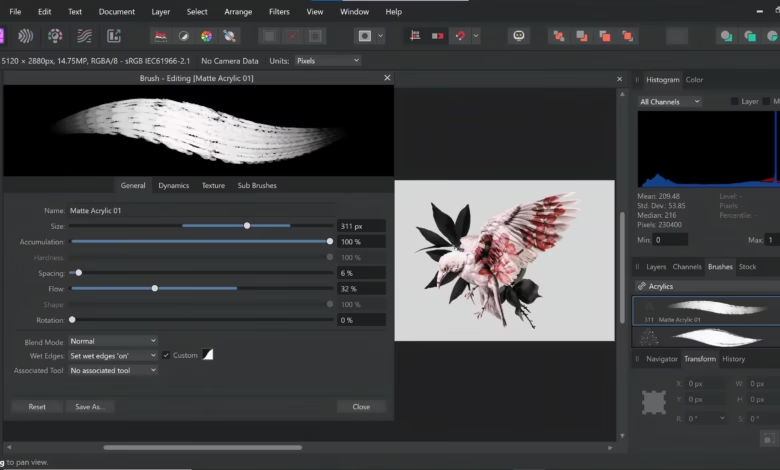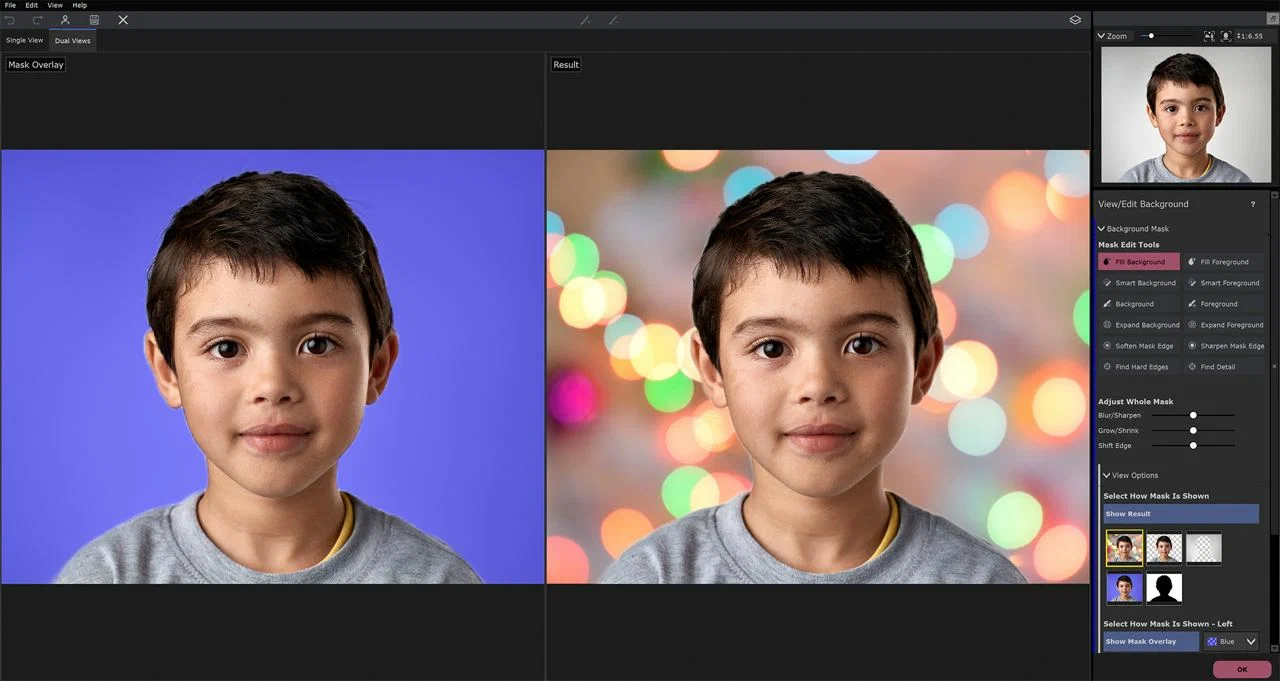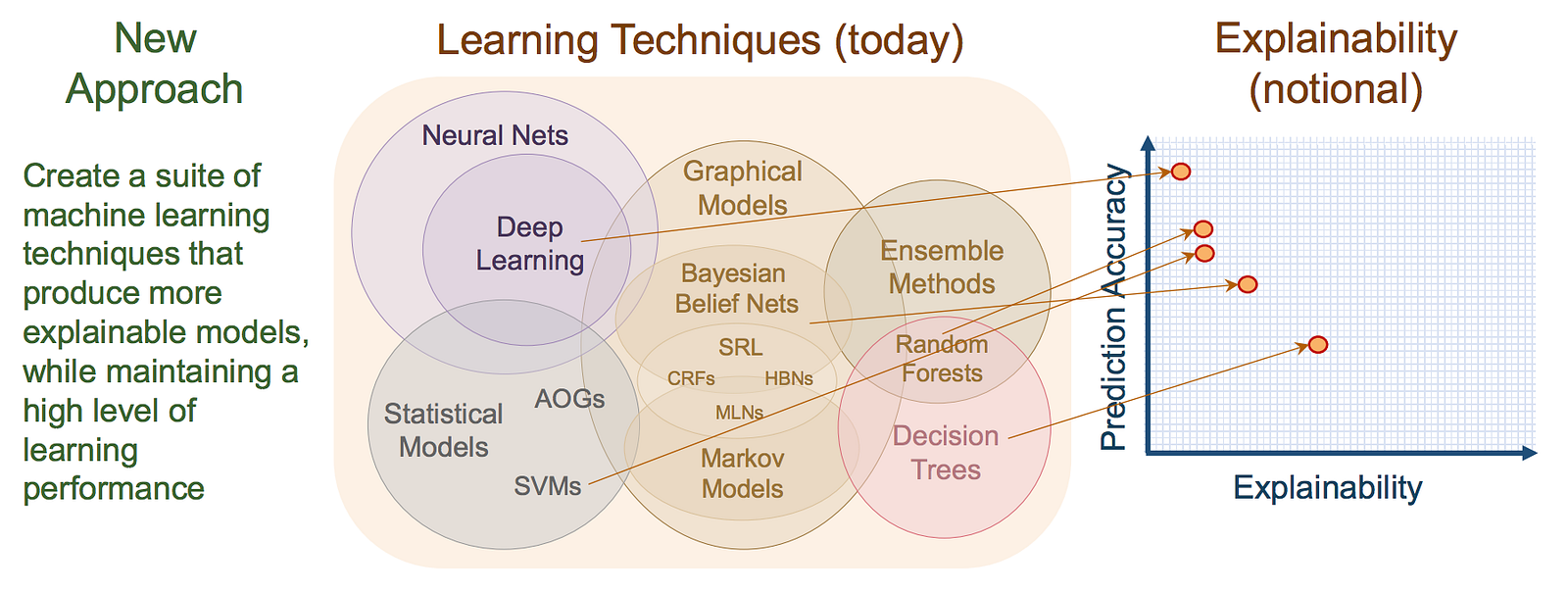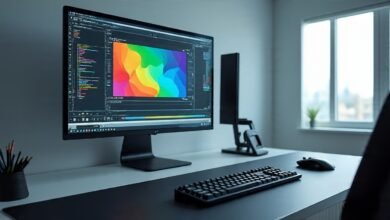AI Photo Editing Apps Transform Your Images Like a Pro
Transform photos instantly with AI photo editing apps. Discover the best professional tools for mobile & desktop. Learn features, benefits & tips

AI Photo Editing Apps The digital photography landscape has experienced a revolutionary transformation with the emergence of AI photo editing apps. These intelligent tools have democratized professional photo editing, making sophisticated image enhancement accessible to everyone, from casual smartphone photographers to seasoned professionals. Gone are the days when creating stunning visuals required years of technical expertise and expensive software.
Artificial intelligence photo editing has fundamentally changed how we approach image enhancement. Modern AI-powered editing tools can automatically detect faces, objects, and backgrounds, intelligently applying corrections that would traditionally take hours to perfect manually. Whether you’re looking to remove unwanted objects, enhance portrait lighting, or completely transform a landscape, AI photo editors deliver professional-quality results with unprecedented speed and accuracy.
The rise of mobile photo editing apps has been particularly transformative. Today’s smartphones come equipped with advanced cameras capable of capturing high-quality images, and AI editing software has evolved to match this capability. From automatic photo enhancement to complex background removal, these applications leverage machine learning algorithms trained on millions of images to understand and replicate professional editing techniques.
Professional photo editing is no longer confined to desktop workstations. The best AI photo editing apps now offer cloud-based processing power that rivals traditional desktop software, enabling users to perform complex edits directly on their mobile devices. Features like intelligent object removal, sky replacement, and portrait retouching have become standard offerings in many applications.
What makes AI photo editing tools particularly compelling is their ability to learn and adapt. These systems continuously improve through machine learning, becoming more accurate and efficient over time. They can analyze image composition, lighting conditions, and subject matter to suggest optimal edits, making photo editing more intuitive than ever before. This technological advancement has created a new paradigm where creativity takes precedence over technical knowledge, allowing users to focus on their artistic vision rather than mastering complex editing techniques.
What Are AI Photo Editing Apps
AI photo editing apps represent a revolutionary category of image editing software that utilizes artificial intelligence and machine learning algorithms to automatically enhance, modify, and transform digital photographs. Unlike traditional photo editing tools that require manual adjustments and extensive user input, these AI-powered applications can analyze images intelligently and apply sophisticated edits with minimal user intervention.
At their core, AI photo editors employ complex neural networks trained on vast datasets of images to understand visual patterns, recognize objects, detect faces, and comprehend compositional elements. This artificial intelligence enables the software to make intelligent decisions about how to improve an image, whether through color correction, noise reduction, or detail enhancement.
Key Technologies Behind AI Photo Editing
The foundation of modern AI photo editing rests on several cutting-edge technologies. Computer vision allows these applications to identify and segment different elements within an image, such as sky, foreground objects, and human subjects. Deep learning algorithms process this visual information to determine the most appropriate enhancements for each element.
Machine learning models have been trained on millions of professional photographs, learning patterns and techniques used by expert photographers and editors. This training enables AI editing tools to replicate professional photo enhancement techniques automatically, delivering results that would traditionally require years of experience to achieve.
Advantages of AI-Powered Editing
The primary advantage of AI photo editing apps lies in their ability to democratize professional-quality image editing. Users can achieve stunning results without extensive technical knowledge or hours of manual work. Automatic photo editing features can instantly improve exposure, contrast, and color balance while maintaining natural-looking results.
AI algorithms excel at tasks that are time-intensive for human editors, such as object removal, skin smoothing, and background replacement. These tools can process multiple images simultaneously, making them invaluable for photographers who need to edit large batches of photos efficiently.
Top Features of AI Photo Editing Apps
Modern AI photo editing apps come packed with innovative features that leverage artificial intelligence to deliver professional-quality results. These intelligent editing tools have transformed the landscape of digital photo editing, making sophisticated techniques accessible to users of all skill levels.
Automatic Photo Enhancement
One of the most fundamental features of AI photo editors is automatic photo enhancement. This technology analyzes various aspects of an image including exposure, contrast, saturation, and white balance to apply optimal adjustments instantly. AI algorithms can identify underexposed or overexposed areas and correct them while maintaining the natural look of the photograph.
Smart enhancement goes beyond basic adjustments by recognizing different scene types such as landscapes, portraits, or low-light photography. The AI system then applies scene-specific optimizations, ensuring that sunset photos retain their warm tones while portrait shots receive appropriate skin tone corrections.
Intelligent Object Removal
AI-powered object removal represents one of the most impressive capabilities of modern photo editing software. These tools can identify unwanted elements in photos and seamlessly remove them while intelligently filling the space with appropriate background content. Whether removing tourists from vacation photos or eliminating power lines from landscape shots, AI removal tools deliver remarkably clean results.
The content-aware fill technology used in these applications analyzes the surrounding pixels and textures to generate realistic replacements for removed objects. This process, which would traditionally require significant manual editing skills, AI Photo Editing Apps can now be accomplished with simple brush strokes or even automatic detection.
Advanced Portrait Editing

AI Photo Editing Apps features have revolutionized selfie and portrait photography. These tools can automatically detect faces and apply various enhancements including skin smoothing, blemish removal, teeth whitening, and eye brightening. The artificial intelligence ensures these adjustments look natural by preserving skin texture and avoiding the over-processed appearance common with manual editing.
Facial recognition algorithms can identify specific features and apply targeted improvements. Some advanced AI photo editing apps can even modify facial structure subtly, adjust makeup virtually, or change hair color while maintaining photorealistic results.
Sky Replacement and Background Editing
AI-driven sky replacement allows users to transform the mood and atmosphere of their photographs instantly. These tools can automatically detect sky areas and replace them with more dramatic or appropriate alternatives. The AI technology ensures proper color matching and lighting adjustments so the new sky appears naturally integrated with the foreground.
Background replacement extends beyond sky editing to include complete background changes. AI segmentation accurately separates subjects from their backgrounds, AI Photo Editing Apps enabling users to place subjects in entirely different environments while maintaining proper lighting and perspective relationships.
Color Grading and Style Transfer
Advanced AI Photo Editing Apps offer sophisticated color grading capabilities that can analyze the mood and tone of reference images and apply similar color treatments to user photos. Neural style transfer technology enables users to apply artistic styles from famous paintings or photographs to their own images, creating unique artistic interpretations.
These AI color tools understand color relationships and can maintain natural skin tones while applying creative color effects. They can also automatically correct color casts caused by different lighting conditions, ensuring consistent color reproduction across image series.
Best AI Photo Editing Apps for Mobile
The mobile photography revolution has been powered by exceptional AI photo editing apps that bring professional-level editing capabilities to smartphones and tablets. These mobile editing tools leverage the processing power of modern devices to deliver sophisticated AI-powered editing on the go.
Adobe Photoshop Express
Adobe Photoshop Express stands out as one of the most comprehensive mobile AI photo editors available. This application brings many of Adobe’s professional AI Photo Editing Apps to mobile devices, including automatic enhancement, object removal, and background replacement. The app’s AI-powered filters can instantly transform ordinary photos into professional-quality images.
The mobile app features one-tap editing options that utilize artificial intelligence to analyze images and apply optimal corrections automatically. Advanced users can access manual controls for fine-tuning, while beginners can rely on the AI suggestions for impressive results without technical knowledge.
Snapseed by Google
Snapseed represents Google’s approach to AI photo editing, offering powerful tools wrapped in an intuitive interface. The app’s selective editing features use AI detection to identify specific areas of images for targeted adjustments. Users can modify faces, sky, or other elements independently while maintaining natural-looking results.
The HDR scape and portrait filters demonstrate sophisticated AI processing that can enhance images captured in challenging lighting conditions. Snapseed’s AI algorithms excel at preserving detail while making dramatic improvements to image quality.
VSCO
VSCO has evolved beyond simple filter applications to incorporate advanced AI photo editing capabilities. The platform’s AI-enhanced presets analyze image content to apply appropriate adjustments automatically. AI Photo Editing Apps Professional photographers often use VSCO for its film-inspired color grading options that are enhanced by artificial intelligence.The app’s AI skin tone protection ensures that color adjustments don’t negatively impact portrait subjects, while smart cropping suggestions help improve composition automatically.
Facetune2
Specializing in portrait editing, Facetune2 offers some of the most advanced AI-powered beauty editing tools available on mobile platforms. The app can automatically detect facial features and apply enhancements that look natural and professional. AI retouching capabilities include skin smoothing, teeth whitening, and eye enhancement.The background replacement feature uses sophisticated AI segmentation to separate subjects from backgrounds accurately, enabling users to place portraits in new environments seamlessly.
Canva
While primarily known as a design platform, Canva’s AI photo editing features have become increasingly sophisticated. The mobile app includes background remover, automatic cropping, and AI-enhanced filters that can transform photos for social media and marketing purposes.Canva’s magic edit feature allows users to modify images with simple text prompts, demonstrating the latest advances in AI photo manipulation technology.
Professional AI Photo Editing Software
For professionals and serious enthusiasts, desktop AI photo editing software offers the most comprehensive set of tools and highest quality processing capabilities. These applications combine traditional editing flexibility with cutting-edge artificial intelligence to deliver unparalleled results.
Adobe Photoshop
Adobe Photoshop remains the industry standard for professional photo editing, and its integration of AI technology has revolutionized many workflows. The Neural Filters feature provides access to numerous AI-powered tools including skin smoothing, facial expression modification, and colorization of black and white images.
Photoshop’s Content-Aware Fill technology uses artificial intelligence to remove objects and fill spaces intelligently. The Select Subject tool can automatically identify and select main subjects in photos with remarkable accuracy, significantly speeding up complex editing tasks.
Generative Fill represents one of the most advanced AI editing features available, allowing users to add or modify image content using simple text descriptions. This AI-powered tool can create entirely new elements within images while maintaining photorealistic quality.
Luminar Neo
Luminar Neo positions itself as an AI-first photo editor designed specifically to leverage artificial intelligence for photo enhancement. The software includes AI Sky Enhancement, AI Structure, and AI Skin Enhancer tools that can dramatically improve images with minimal user input.
The Portrait Background Removal feature uses advanced AI algorithms to separate subjects from backgrounds with exceptional accuracy, even with complex hair and fine details. Luminar Neo’s AI suggestions analyze images and recommend specific adjustments based on content and composition.
ON1 Photo RAW
ON1 Photo RAW combines traditional RAW processing with innovative AI features designed for professional photographers. The software’s AI Auto feature can analyze images and apply optimal corrections automatically, while AI Masking tools can create precise selections based on image content.
The Portrait AI module includes advanced facial recognition and enhancement tools that can improve portraits while maintaining natural appearance. ON1’s AI-powered effects and filters offer creative options that adapt intelligently to image content.
Capture One
Capture One has integrated AI technology into its professional RAW processing workflow through features like AI Masking and automatic lens corrections. The software’s AI subject detection can identify people, backgrounds, and objects automatically, creating precise masks for targeted adjustments.
Professional photographers appreciate Capture One’s AI-enhanced noise reduction and sharpening algorithms that preserve detail while improving image quality. The software maintains color accuracy while applying AI optimizations, crucial for professional color workflows.
Topaz Labs Suite
Topaz Labs offers specialized AI software focused on specific enhancement tasks. Topaz Sharpen AI uses machine learning to improve image sharpness and detail, while Topaz Denoise AI removes noise while preserving fine details. Topaz Gigapixel AI can increase image resolution intelligently, making it invaluable for print applications.These specialized tools demonstrate how AI technology can address specific technical challenges in professional photography, delivering results that surpass traditional editing methods.
How AI Transforms Photo Editing Workflows
The integration of artificial intelligence into photo editing workflows has fundamentally transformed how photographers and content creators approach image enhancement. AI technology has streamlined complex processes, AI Photo Editing Apps reduced editing time, and democratized access to professional-quality results.
Automated Batch Processing
AI photo editing excels in batch processing scenarios where consistent enhancements need to be applied across multiple images. Artificial intelligence can analyze entire photo sets and apply appropriate corrections automatically, maintaining consistency while adapting to individual image characteristics.
Professional photographers often shoot hundreds of images during events or sessions. AI batch processing can handle initial corrections including exposure adjustment, color correction, and noise reduction across entire collections, allowing photographers to focus on creative decisions rather than technical corrections.
Intelligent Auto-Corrections
Modern AI editing algorithms can analyze images and identify specific issues that need correction. Unlike simple auto-enhance features that apply generic adjustments, intelligent AI systems recognize scene types, lighting conditions, AI Photo Editing Apps and subject matter to apply contextually appropriate corrections.
Facial recognition technology enables AI photo editors to identify portraits and apply specific enhancements like skin tone optimization and eye brightness adjustment automatically. Similarly, landscape detection triggers appropriate sky enhancement and color saturation adjustments.
Predictive Editing Suggestions
Advanced AI photo editing software can analyze user editing patterns and image content to provide predictive suggestions for improvements. These AI recommendations learn from user preferences and professional editing standards to suggest edits that align with artistic intent.
Machine learning algorithms trained on professional photography can identify compositional improvements, suggest cropping adjustments, and recommend color grading options that enhance the visual impact of images.
Non-Destructive AI Enhancements
Modern AI editing tools operate within non-destructive editing environments, preserving original image data while applying artificial intelligence enhancements as adjustable layers. This approach allows users to modify or remove AI effects without degrading image quality.Smart objects and adjustment layers powered by AI technology can be refined and customized even after initial application, providing flexibility while maintaining the speed benefits of automated processing.
Advanced AI Features in Modern Apps
The latest generation of AI photo editing apps incorporates sophisticated artificial intelligence capabilities that push the boundaries of what’s possible in digital image editing. These advanced features demonstrate the rapid evolution of AI technology in creative applications.
Generative AI Editing
Generative AI represents the cutting edge of photo editing technology, enabling users to create new image content through text prompts or visual inputs. AI image generation tools can add objects, people, or entire backgrounds to existing photos while maintaining photorealistic quality and proper lighting integration.
Neural networks trained on vast image datasets can understand complex visual relationships and generate content that matches the style, lighting, and perspective of original images. This technology enables creative possibilities that were previously impossible without extensive manual composition work.
Real-Time AI Processing
Modern mobile devices and desktop computers can now perform real-time AI processing for photo editing tasks. Live preview capabilities allow users to see AI enhancements applied instantly as they adjust parameters, providing immediate feedback and enabling more intuitive editing workflows.
Real-time AI filtering in camera applications can apply artificial intelligence enhancements during photo capture, optimizing images before they’re saved to device storage. This approach reduces post-processing requirements while ensuring optimal image quality.
Contextual Content Awareness
Advanced AI photo editors demonstrate sophisticated content awareness that goes beyond simple object recognition. These systems can understand relationships between different image elements and make editing decisions that preserve visual coherency and natural appearance.
Contextual AI can recognize when objects should cast shadows, how lighting should affect different surfaces, and which elements should remain sharp versus naturally blurred. This enables more convincing object removal, background replacement, and content generation.
Multi-Frame AI Processing
Some AI editing applications can analyze multiple frames from burst photography or video sequences to create superior single images. AI frame stacking combines the best elements from multiple exposures, reducing noise, AI Photo Editing Apps improving dynamic range, and enhancing detail.
Temporal AI processing uses information from multiple frames to make better editing decisions, such as more accurate motion blur removal or improved low-light enhancement. This approach leverages additional visual data to achieve results impossible with single-frame processing.
Style Transfer and Artistic AI
Neural style transfer technology enables AI photo editors to apply artistic styles from paintings, illustrations, or other photographs to user images. Advanced implementations can separate style from content, AI Photo Editing Apps applying artistic treatments while preserving important image details and subject recognition.
Artistic AI filters can simulate various traditional art mediums including oil painting, watercolor, and pencil sketching while maintaining the underlying photographic structure. These tools enable creative expression that bridges photography and digital art.
Mobile vs Desktop AI Editing
The choice between mobile AI photo editing and desktop AI software depends on various factors including processing requirements, feature complexity, and workflow preferences. Both platforms offer distinct advantages in AI-powered photo editing.
Processing Power and Capabilities
Desktop AI photo editing software typically offers superior processing power for complex artificial intelligence operations. High-end desktop computers can handle larger files, apply multiple AI effects simultaneously, and process batch operations more efficiently than mobile devices.
Modern smartphones have impressive processing capabilities, and many mobile AI editing apps utilize cloud-based processing to overcome hardware limitations. Cloud AI processing enables mobile apps to access powerful machine learning models without requiring local computational resources.
Feature Complexity and Interface Design
Desktop editing software can accommodate complex interfaces with numerous tools, panels, and adjustment options. Professional AI photo editors like Adobe Photoshop offer extensive customization and precise control over AI parameters.
Mobile applications prioritize streamlined interfaces and one-touch editing capabilities. Mobile AI apps often implement gesture-based controls and simplified workflows that make advanced AI features accessible through intuitive interactions.
File Format Support and Quality
Professional desktop software supports extensive RAW file formats and can maintain full image quality throughout the editing process. AI processing on desktop applications can work with high-resolution images without compression or quality loss.
Mobile editing apps may have limitations with file formats and resolution handling, though leading applications increasingly support RAW processing and high-quality output. Mobile AI editing often includes intelligent compression algorithms that optimize file sizes for sharing while maintaining visual quality.
Workflow Integration
Desktop AI editing software integrates seamlessly with professional photography workflows including color management, print preparation, and asset organization. These applications often include AI-powered cataloging and keywording features for managing large image libraries.
Mobile editing workflows excel in social media preparation and instant sharing capabilities. Mobile AI apps often include direct integration with social platforms and cloud storage services, enabling efficient content creation and distribution workflows.
Cost Considerations
Professional desktop software typically requires significant upfront investment or ongoing subscription costs. However, these applications offer comprehensive toolsets and professional-grade AI capabilities that justify their pricing for serious users.
Many mobile AI editing apps offer freemium models with basic AI features available at no cost and premium AI tools accessible through affordable subscriptions. This pricing structure makes advanced photo editing more accessible to casual users.
Tips for Getting Professional Results
Achieving professional-quality results with AI photo editing apps requires both the capabilities and limitations of artificial intelligence technology. These strategies will help maximize the potential of AI-powered editing tools.
AI Limitations
While AI photo editing can produce impressive results, when to rely on artificial intelligence versus manual techniques is crucial for professional outcomes. AI algorithms excel at repetitive tasks and pattern recognition but may struggle with creative decisions that require artistic judgment.
Over-processing is a common issue when relying too heavily on AI enhancement. Professional results often require subtle adjustments rather than dramatic AI effects. Learning to dial back AI processing intensity helps maintain natural-looking results.
Combining AI with Manual Techniques

The most professional results often come from combining AI automation with manual refinement. Use AI tools for initial corrections and time-consuming tasks, then apply manual adjustments for creative control and artistic vision.Layered editing approaches work well with AI photo editors. Apply AI enhancements as separate layers or adjustments that can be modified, masked, or blended with manual edits for optimal results.
Optimizing Input Images
AI algorithms perform better with higher quality input images. Shooting in RAW format provides more data for AI processing and better results than working with compressed JPEG files. Proper exposure and focus during capture significantly improve AI editing outcomes.Image resolution affects AI processing quality. While some AI tools can enhance low-resolution images, starting with adequate resolution provides better detail preservation and enhancement possibilities.
Strategic AI Tool Selection
Different AI editing tools excel at specific tasks. Use specialized AI features for their intended purposes rather than applying general auto-enhancement to all images. Portrait-specific AI tools work best on people photos, while landscape AI features optimize natural scenes.Batch processing with AI tools works well for consistent corrections across image series, but unique or artistic images may require individual attention and custom AI parameter settings.
Quality Control and Review
Professional workflows include systematic quality review of AI-processed images. Zoom inspection helps identify AI artifacts or processing errors that might not be visible at normal viewing sizes. Pay attention to areas where AI processing transitions occur, such as edges between subjects and backgrounds.
Before and after comparisons help evaluate whether AI enhancements actually improve images or introduce unwanted effects. Sometimes minimal AI processing produces more professional results than aggressive automatic corrections.
Maintaining Creative Vision
Use AI photo editing as a tool to realize creative vision rather than letting artificial intelligence dictate artistic choices. AI suggestions can provide inspiration, but the final creative decisions should align with personal or client preferences.Consistency across projects or image series often requires manual oversight of AI processing. Establish editing styles and AI parameter settings that can be applied consistently while allowing for image-specific adjustments.
Future of AI in Photo Editing
The future of AI photo editing promises even more revolutionary changes as artificial intelligence technology continues advancing rapidly. Emerging developments in machine learning and computer vision will transform how we create and manipulate digital images.
Real-Time AI Enhancement
Real-time AI processing capabilities will continue expanding, enabling instant photo enhancement during capture rather than post-processing. Future smartphone cameras will incorporate more sophisticated AI algorithms that optimize images automatically as they’re taken.
Live preview technology will become more accurate and responsive, allowing users to see AI effects applied instantly with minimal processing delay. This advancement will make AI photo editing more intuitive and immediate.
Advanced Generative Capabilities
Generative AI technology will enable more sophisticated content creation within photo editing applications. Future AI tools will generate entire scenes, objects, or backgrounds based on text descriptions or sketches, seamlessly integrating new content with existing photographs.
3D-aware AI processing will understand spatial relationships and lighting conditions more accurately, enabling more convincing object insertion and scene modification. This technology will blur the lines between photography and digital art creation.
Personalized AI Assistants
AI editing assistants will learn individual user preferences and editing styles, providing increasingly personalized suggestions and automatic enhancements. These AI systems will understand artistic preferences and can apply consistent styling across projects automatically.Collaborative AI features will enable artificial intelligence to work alongside human editors more seamlessly, handling routine tasks while alerting users to creative opportunities or potential improvements.
Enhanced Mobile Capabilities
Mobile AI editing will continue approaching desktop software capabilities as smartphone processors become more powerful and cloud computing integration improves. Edge AI processing will enable sophisticated photo editing without requiring internet connectivity.
Augmented reality integration will enable AI editing in real-time camera views, allowing users to see and modify AI enhancements before capturing images. This technology will merge photo editing with photography more seamlessly.
Ethical AI Development
Future AI photo editing development will increasingly focus on ethical considerations including deepfake prevention, consent verification, and transparency in AI-generated content. Watermarking and provenance tracking technologies will help identify AI-modified images.Responsible AI development will ensure artificial intelligence tools enhance creativity while maintaining trust and authenticity in digital photography and visual media.
More Read:Top 50 AI Photo/Image Editing Apps (Free & Paid): The Ultimate 2025 Guide
Conclusion
AI photo editing apps have fundamentally transformed the landscape of digital photography, making professional-quality image enhancement accessible to users of all skill levels. From automatic photo enhancement and intelligent object removal to sophisticated portrait retouching and background replacement, these AI-powered tools deliver impressive results with unprecedented ease and speed. The evolution from basic filter applications to sophisticated artificial intelligence systems has democratized professional photo editing, enabling creativity without requiring years of technical expertise.
Whether you’re using mobile AI editing apps for social media content or professional desktop software for commercial projects, AI technology continues advancing rapidly, promising even more revolutionary capabilities in real-time processing, generative content creation, and personalized editing assistance. The future of photo editing lies in the seamless integration of human creativity with artificial intelligence, where AI tools handle technical complexities while users focus on artistic vision and creative expression.









